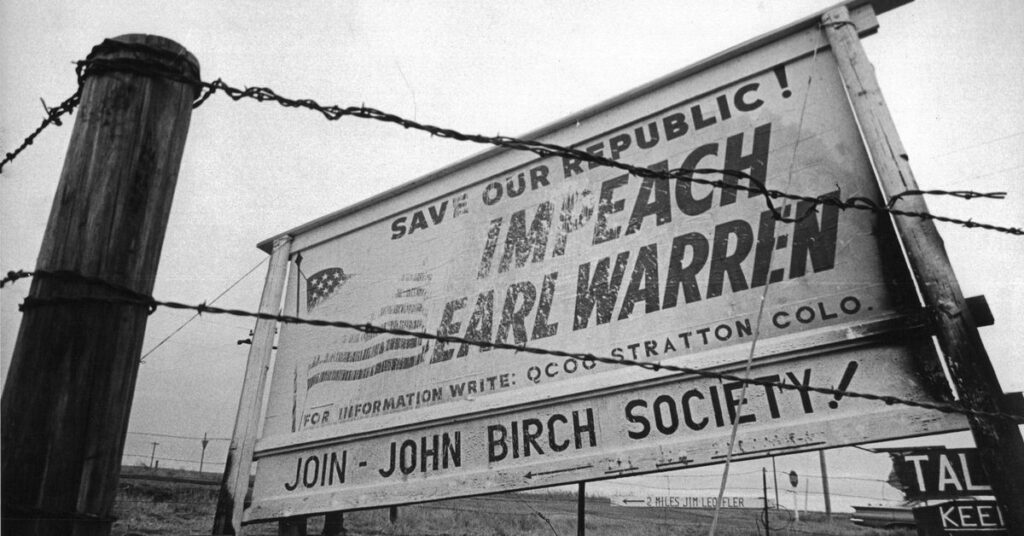On December 8, 1958, a group of 12 well-to-do businessmen gathered in the living room of an upscale, Tudor-style home in Indianapolis, Indiana, to save the United States from an imminent communist takeover.
Or at least that’s what the group’s host — a former candy manufacturing executive turned anti-communist agitator named Robert W. Welch Jr. — told them they were there to do.
Welch had summoned the group to recruit them for a new organization dedicated to exposing what he believed to be a far-reaching communist plot to overthrow the US government. According to Welch, communist agents had infiltrated every level of the government and had seized control of both the Democratic and Republican parties. Even Dwight Eisenhower, the former five-star general who had cruised to a second term in the White House as a moderate Republican in 1956, was suspected of being a communist agent.
What was needed to combat this massive plot, Welch told the group, was a new “national education program,” via pamphlets, speeches, and the like, that could teach average Americans about the communist threat. The men enthusiastically agreed, and they resolved to serve as the vanguard of that movement.
They called themselves the John Birch Society, taking their name from a Baptist missionary who had been killed in China by communist forces in 1945 — the first recognized casualty of the nascent Cold War.
As the historian Matthew Dallek documents in his new book, Birchers: How the John Birch Society Radicalized the Far Right, the group would go on to grow from a small club of far-right businessmen into a sprawling, nationwide organization that claimed up to 100,000 members across hundreds of state and local chapters. Over time, the John Birch Society would leave its imprint on the Republican Party, pushing it to embrace more hardline positions on anti-communism, white supremacy, isolationism, and nativism.
Six decades after that initial gathering in Indianapolis, it’s…
Read the full article here





